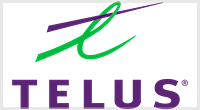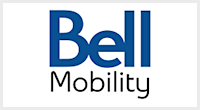
In Canada, the best carrier depends on where you live. Bell, Rogers, and Telus, also known as the Big Three, have the largest nationwide networks, but their prices are high compared with smaller, regional competitors, like Freedom Mobile, SaskTel, and Videotron.
Here are the cellular coverage rankings, based on the amount of the country's land in their respective networks:
Canada's eight largest urban centres have better than 99.9% coverage on all three national networks. Most well-populated rural areas also feature extensive high-speed LTE service, but coverage varies throughout the country's sparsely populated wilderness.
If you want the best price, you need to know your options. Below, we've got coverage maps for every region of the country so you can learn who offers service in your neighbourhood.
Find the best coverage in your area
We've mapped the coverage for every Canadian network. Use the drop-down menu on the left-hand side to toggle between networks and check or uncheck the connection speed you'd like.
Western Canada and the Territories coverage
Bell and Telus cover much of Western Canada, with Rogers providing slightly less. SaskTel provides cheap, regional coverage in Saskatchewan, while Bell MTS does the same for Manitoba.
Looking to get granular? Follow the hyper-specific coverage guides below to better understand the coverage in these particular areas of the country.
Western Canada Provincial and Territory coverage guides:
- British Columbia cellular coverage
- Alberta cellular coverage
- Saskatchewan cellular coverage
- Manitoba cellular coverage
- Yukon cellular coverage
- Northwest Territories cellular coverage
- Nunavut cellular coverage
Western Canada city coverage guides:
Ontario and Quebec coverage
Bell, Rogers, and Telus all provide coverage throughout this region, with 5G available in urban centres. Freedom Mobile provides low-cost plans for Toronto and Ottawa metropolitan areas, while Videotron offers competitive regional coverage for Quebec.
If you want to see a local's guide to coverage in these areas, read our guides below.
Ontario and Quebec provincial coverage guides:
Ontario and Quebec city coverage guides:
East Coast and Maritimes coverage
Bell and Telus provide the most coverage to this region, with Rogers a few steps behind. Videotron, meanwhile, provides cheaper coverage than the Big Three, though the coverage area is limited to coastal Quebec.
Learn about cell coverage in the Maritimes, island-by-island, by reading the coverage guides below.
East Coast provincial coverage guides:
- Quebec cellular coverage
- New Brunswick cellular coverage
- Prince Edward Island cellular coverage
- Nova Scotia cellular coverage
- Newfoundland and Labrador cellular coverage
East Coast Canada city coverage guides:
Compare Major Carrier Coverage Maps
Telus coverage map

Credit: Telus
Telus has the best LTE network and the best combination of network coverage and performance from any of Canada's national carriers. Bell and Telus share the same towers, but Telus has better download speeds and reliability. Canadians on the Telus network take advantage of its 5G speeds, unlimited data, prepaid plans, and phone deals.
Interested in Canada’s fastest network? Check out how Telus' coverage compares with its competitors.
Telus MVNOs
Two major MVNOs operate under Telus in Canada. The first is Koodo Mobile, which provides 5G and 4G LTE coverage to all major regions within Canada. As expected, 5G availability is limited to larger metropolitan areas like Vancouver, Calgary, and Toronto. However, LTE Advanced and LTE services are accessible coast to coast.
Similarly, Public Mobile, another Telus MVNO, offers 5G, LTE, and 3G coverage in Canada. Compared to Telus, plans are much more affordable. However, like Koodo, speeds and reliability aren't as strong when placed side by side with Telus.
Bell coverage map

Credit: Bell
You can pick up fantastic 5G service and network coverage from Bell, too. Sharing the same towers with Telus gives customers the same great coverage, though Telus is generally considered to be faster and more reliable.
Regardless, on Bell’s network, you can still expect solid 4G LTE and 5G coverage, along with plans for all kinds of data users. Choosing one of Bell's unlimited data plan options is the best way to take advantage of this top phone provider's strong mobile coverage. Looking for a great carrier that offers a variety of services? Learn everything you need to know in our guide to Bell's coverage area.
Bell MVNOs
Bell also has two major MVNOs, Virgin Plus and Lucky Mobile. In the case of Virgin Plus, Canadians can no longer find available 5G plans as the carrier has sunset all support of 5G. Instead, Virgin Plus supports 4G LTE plans with coverage in every province coast to coast.
Similarly, Lucky Mobile offers 4G LTE and 3G coverage to 99% of Canadians. However, 5G data speeds are not offered. With that in mind, Lucky Mobile plans are more affordable than a larger carrier like Bell.Use our coverage map to check out what Bell's network looks like in your particular neighbourhood.
Rogers coverage map

Credit: Rogers
Rogers doesn't offer quite as much coverage or speed as Telus and Bell do, but the carrier partners with other carriers to provide extended coverage to its customers. Like Bell and Telus, Rogers offers 5G and 4G LTE connectivity to subscribers. In fact, Rogers was the first Canadian carrier to launch
5G service.Rogers MVNOs
Under the Rogers umbrella exists Fido, which operates as an MVNO. Plans under the carrier are far more affordable when compared to its parent company. Fido offers affordable 4G LTE coverage to 97 percent of Canadians. Coverage from the carrier is limited in rural areas of the country, instead prioritizing more populated areas.
Want to see if Rogers is the best bet for your neighbourhood? See how it stacks up against the competition with our Rogers coverage guide.
Freedom Mobile coverage map

Credit: Freedom Mobile
When Freedom Mobile originally launched as Wind Mobile, its affordable prices disrupted the Canadian telecom market. This wasn't an act of philanthropy: to this day, Freedom keeps its costs so low because its coverage footprint is considerably smaller than its competitors. If you're in a major city centre, particularly in Ontario, Alberta, and British Columbia, you'll have reliable 4G coverage with Freedom.
If you venture outside of its network, you'll still have coverage through one of its partner carriers, but you're likely to experience slower speeds.
Interested in Freedom’s cheap cell phone plans? Get the details over on our guide to the Freedom Mobile network.Regional carrier mobile coverage maps
Some of the most affordable plans in Canada are available through regional carriers. Although their networks are smaller, regional carriers compete with the Big Three in price and service. Find some of the best regional carriers below.
Videotron
Videotron has some of the best cell phone coverage for Quebecers and residents of Northern Ontario. The coverage area is relatively large for a regional carrier and provides fast speeds and reliable connectivity.
Customers can take advantage of their plans, which offer cheap 5G data and great prices on the latest smartphones.
SaskTel
Saskatchewan is notorious for having very little coverage outside of major corridors, but SaskTel provides coverage to the southern half of the province. Through its partner networks, SaskTel affords its users coverage across the country without roaming charges.
Want to see what SaskTel can offer you? Check out their unlimited data and family cell phone plans.
Eastlink
Supporting the east coast of Canada, Eastlink is a regional carrier, providing coverage primarily to Nova Scotia and Prince Edward Island. In regions like Halifax and Wolfville, Eastlink does support 5G coverage. However, for the most part, customers can utilize 4G LTE coverage on the East Coast with extended coverage supported elsewhere.
If you live on the East Coast, take a gander at Eastlink's unlimited data plans to find out more.
Other regional carriers
Curious to see what else is available in your neighbourhood? Enter your address into the WhistleOut search engine to find the best service available to your location, or check out some of the most popular regional plans below.
How to improve cell phone coverage
If you're unhappy with your current plan, you've got a number of options for improving your situation. Below, we explain how to make a bad situation better by changing carriers, making the jump to 5G, upgrading your device, and investigating a new plan with your current provider.
Change carriers
Sometimes, swapping your phone plan is the best option, even if it's not the most attractive. Moving from a smaller cell phone carrier to a larger one can provide better coverage, speeds, and overall value. On the other hand, avoiding high costs can still work as long as you find a carrier with better coverage where you live.
Get a plan with 5G
Customers who use 5G plans receive significantly faster speeds but not always more coverage area. While not inherently more reliable than 4G LTE, 5G will give you a much better experience using your mobile data if you want better speeds.
Upgrade your device
Your smartphone plays a direct role in your service quality. An older phone could have hardware that isn't capable of taking full advantage of your carrier's service, even if you're in the heart of its coverage area. Devices older than a couple of years also won't be able to use 5G networks, limiting you to 4G LTE or 3G speeds.
If you're interested in a new phone, we recommend checking out the best cell phone deals in Canada.
Check in with your current provider/plan
One of the biggest mistakes mobile customers make is embracing complacency. Many carriers offer options that vastly improve service and customer experience for only a few extra bucks a month. You could possibly change your plan to access 5G speeds, pick up a new phone, or just save some cash on your monthly bill.
Which network to pick when choosing a plan
Before you sign up for a new plan, you must understand what it is you're buying. Below, we break down some of the more confusing aspects of the current telecom market so you can pick out your new plan with confidence.
5G over LTE and 3G
In most cases, major Canadian carriers offer 5G connectivity in some form around Canada. 5G networking standards are in place, largely in metropolitan areas as well as urban hotspots. However, 4G LTE continues to be the de facto network for most carriers as a large percentage of the Canadian population still can't access 5G.
Coverage is where the people are
Canada's wireless networks have been constructed in more populated areas. As a result, the underpopulated regions of the Canadian wilderness have fewer cell towers, leading to spotty service. The CRTC has passed legislation meant to encourage more towers in the rural regions of the country, but significant improvements have yet to be seen.
Using the latest mmWave frequency bands, customers can expect a fast range of 89–705Mbps speeds on a 5G network. However, as mentioned, the 5G expansion within Canada is slow. So, for the bulk of the Canadian population, 4G LTE will be the way to go, with speeds ranging from 25–220Mbps. As for 3G, it’s quickly being abandoned by customers in Canada, but many carriers still offer it. The coverage standard of 3G offers far slower and less reliable service to Canadians, since it runs on older tech.
All in all, it very much depends on what's available within your area. 5G connectivity comes with some great perks for customers. 5G plans are also more expensive when compared to other options. 4G LTE is a good middle ground where it's accessible coast to coast, with extended coverage available. So, if fast speeds for streaming Netflix are a priority for you and you're in a supported area, 5G is probably where you'll gravitate towards. However, if you want reliable, cost-efficient, and far-reaching connectivity, 4G LTE services are your best bet.
Coverage is where the people are
Canada's wireless networks have been constructed in more populated areas. As a result, the underpopulated regions of the Canadian wilderness have fewer cell towers, leading to spotty service. The CRTC has passed legislation meant to encourage more towers in the rural regions of the country, but significant improvements have yet to be seen.Mobile Virtual Network Operators (MVNOs)
Mobile virtual network operators (MVNOs) are carriers that buy services from one of the larger carriers in bulk and then resell these services at a lower price. MVNOs can do this as they aren't paying for things like new towers and other network infrastructure. Canadian MVNOs are slightly different from other parts of the world, where MVNOs are independent entities purchasing space on larger networks. In Canada, "MVNO" is a bit of a misnomer: Bell, Rogers, and Telus all own their own MVNOs, which effectively operate as budget side brands, appealing to demographics who might otherwise ignore the Big Three.
The primary MVNOs are Koodo, Virgin Plus (formerly Virgin Mobile), and Fido. These carriers provide service from Telus, Bell, and Rogers, respectively, but at a much lower monthly price. The main trade-off with signing up with these cheaper carriers is that getting a new phone can be more expensive.
Bell, Rogers, and Telus also own their own prepaid brands in Lucky Mobile (Bell), Chatr Wireless (Rogers), and Public Mobile (Telus). You'll be limited to 3G data speeds on these carriers, but they offer some of the cheapest plans in the country.
You can find other Canadian MVNOs in our list of mobile carriers and their plans, or check out some of the most popular plans below.
FAQs
Related Articles
Find Better Phones and Plans
Hundreds of cell phone plans unpacked. All the facts. No surprises.











































